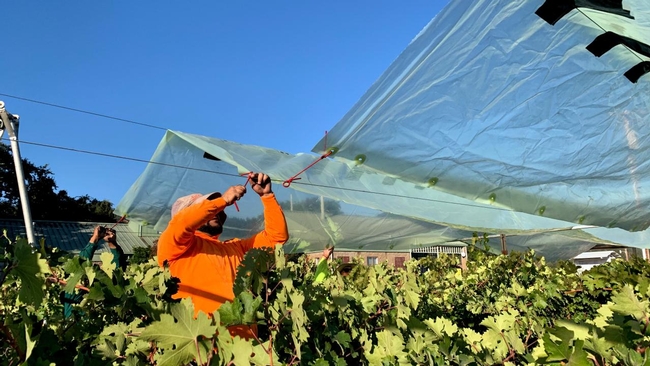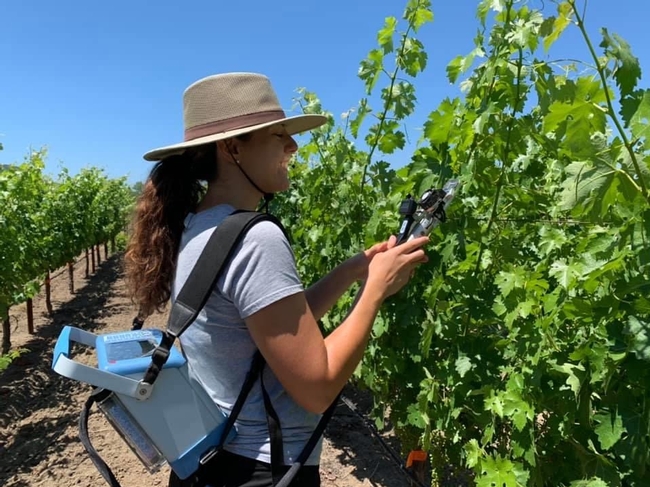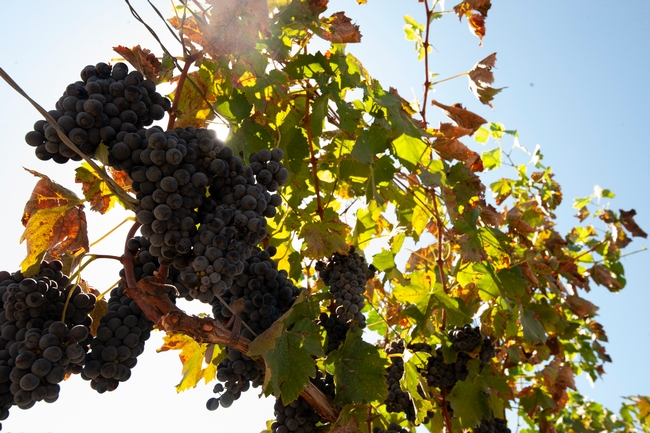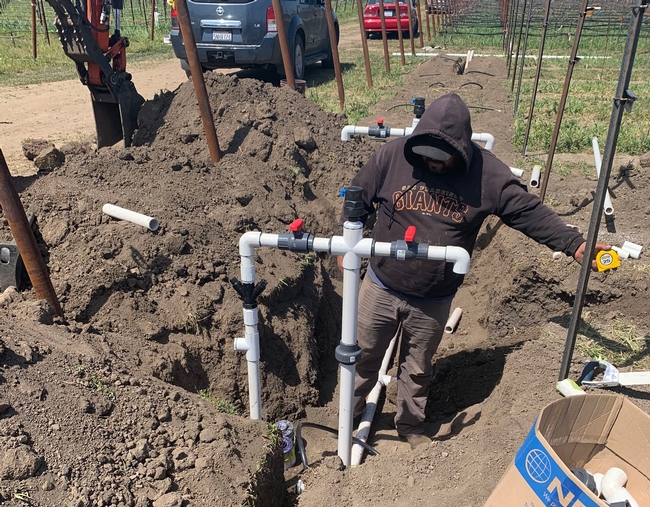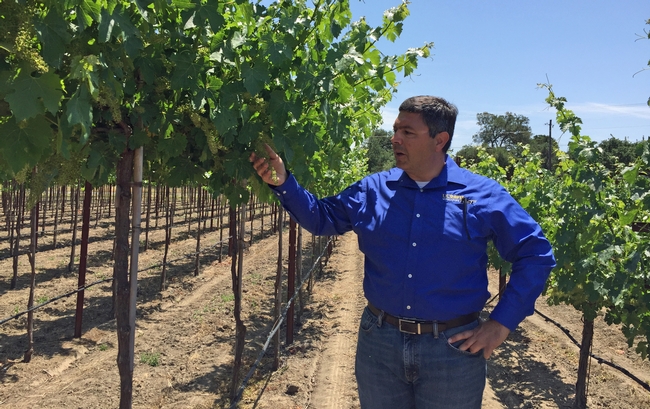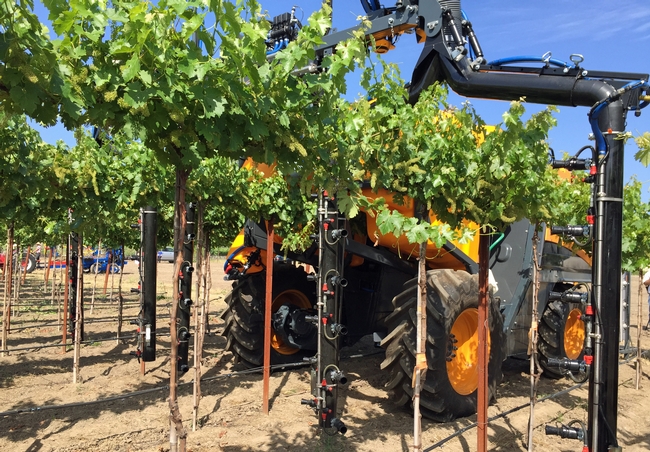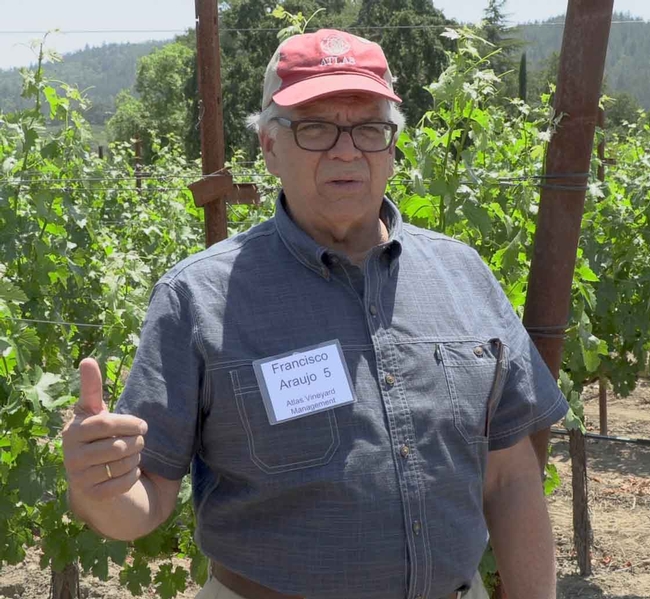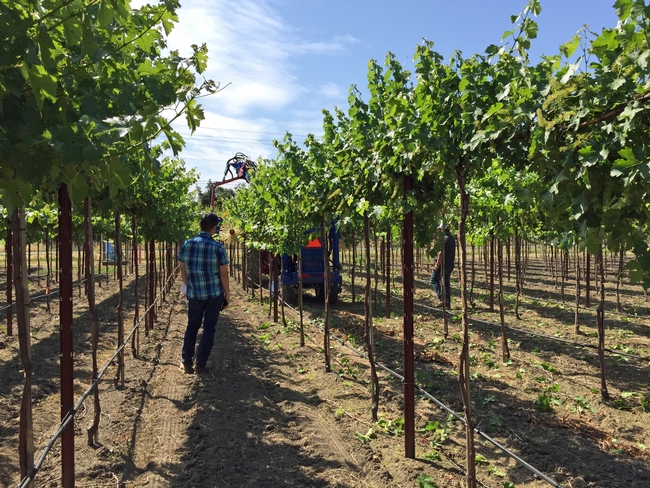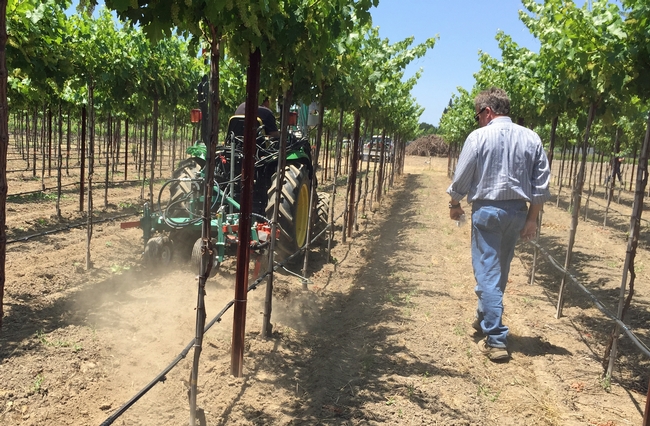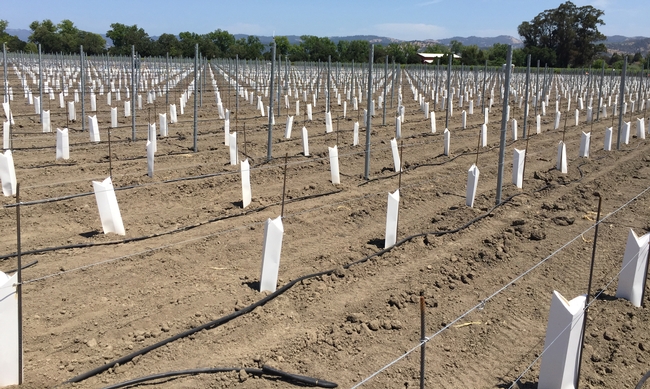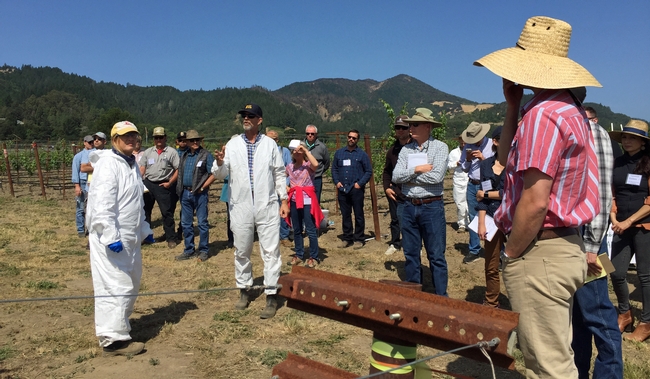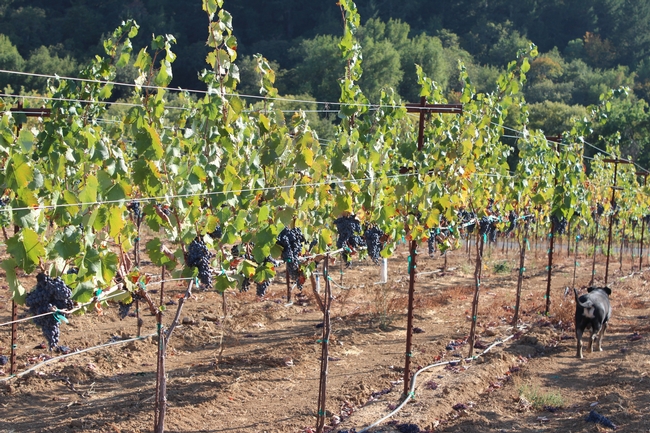
Posts Tagged: Wine Grapes
Increasing temperatures led to better-tasting wine grapes, but for how long?
Study shows sugar, color content should be watched
Warming temperatures over the past 60 years have led to increased wine quality, but a new study looking at sugar and color content in grapes indicates the industry may be facing trouble if trends continue, according to collaborative research out of the University of California, Davis, and University of Bordeaux.
“Quality has increased steadily up to now,” said lead author Kaan Kurtural, a professor of viticulture and enology and an extension specialist at UC Davis. “We just don't know the tipping point.”
Kurtural's research, published in the journal OENO One, focuses on two renowned wine regions — Napa Valley and Bordeaux, France.
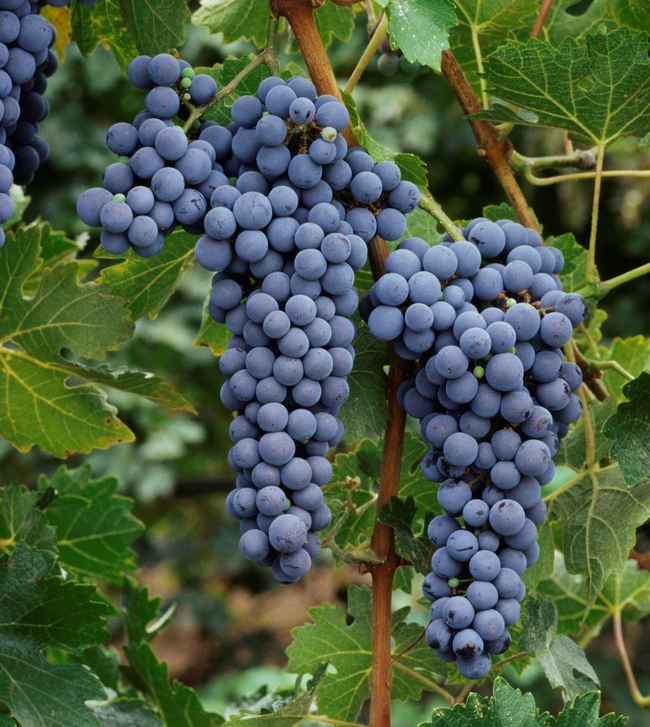
Researchers looked at ripening, grape quality and temperature data over six decades in both regions and then confirmed the findings with a five-year trial in Napa. They also consulted wine ratings in publications like Wine Spectator to gauge consumer demand.
One key finding: As temperatures exceeded what was considered the optimal level for quality, the grapes produced better wines.
“Previous research had few field data, but a record of assumptions,” said Kurtural.
Other quality factors at play
Temperature is a factor, but the paper suggests that sugar and color content should not be discounted. The authors also identified a biomarker that affects taste, color and other factors that can be the bellwether for climate change in red-skinned wine grapes.
“Temperature is always there,” he said. “Temperature is not your bellwether.”
Higher temperatures can harm grape composition, including color, taste and aroma. Researchers examined pigment and sugar content of five California vintages of cabernet sauvignon, finding that as the grapes got sweeter the skin and color deteriorated.
The degradation of these quality-related compounds and the observed plateaus of wine quality ratings suggests there can be too much of a good thing.
Researchers have long theorized that increasing temperatures from climate change would lead to shifts in wine-growing regions, opening up some new areas for vineyards and making others unsustainable.
That shift could be a boon to some economies and devastating to others, something the industry should watch.
“Since the 1980s, grapes got riper and they were able to make better flavor and color compounds,” Kurtural said. “Are we going to lose this or adapt more?”
Gregory A. Gambetta with the University of Bordeaux is a corresponding author on the paper.
For more information:
- Kaan Kurtural, Viticulture and Enology, cell 707-200-5378, skkurtural@ucdavis.edu
- Amy Quinton, UC Davis News and Media Relations, cell 530-601-8077, amquinton@ucdavis.edu
- Emily C. Dooley, College of Agricultural and Environmental Sciences, cell 530-650-6807, ecdooley@ucdavis.edu
Coastal grape growers can use less water during drought
Study finds using less doesn't compromise quality
California grape growers in coastal areas can use less water during times of drought and cut irrigation levels without affecting crop yields or quality, according to a new study out of the University of California, Davis.
The findings, published today (Sept. 1) in the journal Frontiers in Plant Science, show that vineyards can use 50% of the irrigation water normally used by grape crops without compromising flavor, color and sugar content.
It sheds new light on how vineyards can mitigate drought effects at a time when California is experiencing a severe water shortage and facing more extreme weather brought on by climate change, according to lead author Kaan Kurtural, professor of viticulture and enology and an extension specialist at UC Davis.
“It is a significant finding,” Kurtural said. “We don't necessarily have to increase the amount of water supplied to grape vines.”
Growers will also be able to use this information to plan for the next growing season. “Everybody's worried about what's going to happen next year,” he said.
Kurtural and others from his lab studied irrigation and cabernet sauvignon grape quality at a research vineyard in Napa Valley over two growing seasons, a rainy one in 2019 and a hyper-arid one in 2020.
They focused on crop evapotranspiration, which was the amount of water lost to the atmosphere from the vineyard system based on canopy size. The weekly tests used irrigation to replace 25%, 50% and 100% of what had been lost by the crop to evapotranspiration.
Researchers found that replacing 50% of the water was the most beneficial in maintaining the grape's flavor profile and yield. The level of symbiotic arbuscular mycorrhizal fungi, which help grapevines overcome stresses such as water deficits, was also not compromised. And the water used to dilute nitrogen application was also reduced, making the process more environmentally friendly.
The water footprint for growing grapes also decreased. For both the 25% and 50% replacement levels, water use efficiency increased between 18.6% and 29.2% in the 2019 growing season and by 29.2% and 42.9% in the following dry year.
While focused on cabernet sauvignon, most red grapes will respond similarly, he said.
“In the end, drought is not coming for wine,” Kurtural said. “There doesn't need to be a tremendous amount of water for grapes. If you over irrigate in times like these, you're just going to ruin quality for little gain.”
Members of Kurtural's lab — Nazareth Torres, Runze Yu, Johann Martinez-Lüscher and Evmorefia Kostaki — are also credited as authors.
University of California Agriculture and Natural Resources provided partial funding.
For more information, contact:
- Kaan Kurtural, Viticulture and Enology, skkurtural@ucdavis.edu
- Amy Quinton, UC Davis News and Media Relations, amquinton@ucdavis.edu
- Emily C. Dooley, College of Agricultural and Environmental Sciences, ecdooley@ucdavis.edu
Growers get labor-saving ideas at UC Grape Day
Will machines replace the romance of the hand-cultivated wine grape vineyard? A “touchless” vineyard was among the latest research on labor shortages, weeds and pest management by UC Cooperative Extension scientists discussed at Grape Day at the UC Davis Oakville Station, located in the epicenter of California wine country, on June 6.
About 200 wine grape growers, vineyard consultants and other industry people attended to learn about the latest UC Cooperative Extension research. Vineyard managers from boutique wineries such as Fork in the Road to Pine Ridge Vineyards to the Fortune 500 wine company Constellation Brands gathered at the research station's experimental vineyard. Several vineyard equipment representatives brought their machines to the field to demonstrate their weeding, pruning and canopy management capabilities.
Addressing labor shortages
To help growers attract and retain farm workers, Monica Cooper, UC Cooperative Extension advisor for Napa County and her research assistant, Malcolm Hobbs, are conducting a survey of agricultural workers to determine the factors that affect job satisfaction. They found the number of female workers in Napa County has increased rapidly since 2013. “Women may be moving into the labor pool to fill vacancies caused by the decline in the number of male workers migrating to the U.S. for agricultural work,” Cooper said.
They plan to provide participating companies with custom recommendations for recruiting and retaining workers.
“We will also be generating a generic summary that will be widely shared with participants and non-participants at the close of the study. For now, we cannot make any general conclusions or recommendations because data collection is ongoing,” Cooper said. “We are aiming to distribute our final report this winter, so stay tuned.”
To help growers reduce their need for hand labor, UC Cooperative Extension viticulture specialist Kaan Kurtural designed a “touchless” demonstration vineyard that is mechanically managed. The mechanized vineyard is one of six trellis systems he is studying for water use, nitrogen use efficiency, yield and fruit quality of the wine grapes.
“We're always looking for ways to improve yield, quality and to reduce cost,” said Francisco Araujo, director of viticulture for Atlas Vineyard Management. “In light of the labor shortage we're facing right now, Kaan is exploring new production systems that include new trellises, mechanization, different types of mechanization from pruning to shoot thinning and trunk suckering. He's obtaining information about how these new trellis systems that he is investigating are going to play with yield and quality.”
The touchless vineyard experiment started out as a demonstration at first, but with grower interest, it turned into a full-blown research project.
“It started as way of saving labor costs, but when we started looking at the physiological aspects of how these plants grow, we saw the benefits from the quality point of view in addition to the labor savings,” said Kurtural, who is based in the Department of Viticulture and Enology at UC Davis.
A traditional vineyard in the Napa area is about a meter or 36 inches above the vineyard floor with vertical shoots held up with wires, which are moved by hand.
Saves water
“We said, ‘Why don't we turn the system upside down?' Grow a tall trunk then put the bilateral cordon about 62 inches above the vineyard floor, that way we can push the rows a lot closer,” said Kurtural, who oversees the 40-acre Oakville experimental vineyard. The leaves grow down to generate the same leaf area as a traditional vineyard, but the leaves in the mechanized vineyard use water more efficiently so the no-touch vineyard requires less water compared to traditional vineyard systems.
“This is a dense system, this is 1.5 meters by 2 meters, roughly 1,340 plants per acre – we're getting by here on a third to quarter acre foot of water,” Kurtural said.
“It costs us roughly about a dollar in labor operation costs to manage each plant in a traditionally farmed vineyard of roughly about 1,300 plants per acre on the North Coast now,” Kurtural said. “The no-touch plants are costing us about 7 cents in labor operations costs.”
“The biggest expense is pruning, after that we go through what they call trunk suckering, which is also done mechanically here, and after that they will do shoot removal to open up the canopy. That's also done mechanically. After that, if there's need, they will do leaf removal, that's also done mechanically. And one last resort, if there's too much crop here, they will shake off excess berries with a harvester.”
The conventional system yields up to 5 to 6 tons per acre whereas the mechanized vineyard yields 7 to 8 tons per acre.
“These clusters set far fewer berries than a traditionally managed vineyard, but the berry size is also very small, which is what the winemakers like,” he said.
During harvest, grapes picked by machine are sorted on board the harvester so they go into the winery in uniform sizes, whereas hand-harvested grapes have to be sorted on a tray before they are put into the press tank.
“We made wines from these last year and compared to our traditionally farmed vineyards. Until we tell people what it is, they cannot distinguish the quality of the fruit or the wine.”
Weed and pest management
John Roncoroni, UCCE weed science farm advisor in Napa County, discussed options for weed control among young grape vines.
In the past, many vineyards were fumigated before planting for disease control, but it also provided weed control for young vines.
“With the loss of most fumigants for use in vineyards, hand-weeding was often used to accomplish this task,” Roncoroni said. “Increased costs and decreased labor force have made hand weeding impractical. Mechanical cultivation, at this point, is too imprecise – either leaving weeds close to young vines or causing damage by being too close.”
Covers on young vines allow the use of many post-emergence herbicides to control weeds, but Roncoroni cautioned that application of post-emergence herbicides on vines that aren't protected by mature bark may damage or even kill the vine.
“Herbicide use on vines less than 3 years old is a risky endeavor,” Roncoroni said. “Follow all label requirements, paying special attention to soil and irrigation recommendations.”
Lynn Wunderlich, UC Cooperative Extension advisor for the Central Sierra, and Franz Niederholzer, UC Cooperative Extension advisor for Colusa, Sutter and Yuba counties, demonstrated how to calibrate sprayers and to get uniform coverage when spraying fungicides.
In 2016, UC Davis researchers identified the three-cornered alfalfa hopper, Spissistilus festinus, as a vector of grapevine red blotch virus. Cindy Preto, a Ph.D candidate in the UC Davis Department of Entomology who is assisting UC scientists studying the three-cornered alfalfa hopper's biology and host plants, provided an update on their research.
Araujo, the viticulture consultant, said he and his colleagues value the university's research. “Napa Valley is a place where quality is paramount yet more and more we have labor shortage, we have inflation, production costs are going up,” he said. “Finding a way to get maximum quality along with yield levels that will pay for the increasing costs of production is the only way we'll be sustainable now and in the future.”
UC releases new cost study for growing winegrapes

The cultural practices described represent the establishment and production operations, as well as materials of a well-managed cabernet sauvignon vineyard in this region. The costs, materials, and practices shown in this study will not apply to all farms. Growers, UC ANR Cooperative Extension farm advisors, and other agricultural associates provided input and reviewed the methods and findings of the study.
The hypothetical 200-contiguous-acre farm is located in Crush District 11, which includes San Joaquin and Sacramento counties. The economic life of the grower-owned-and-operated cabernet sauvignon vineyard used in this cost analysis is 25 years. Vine management includes hand operations such as pruning, suckering, shoot removal and positioning. The grapevines are mechanically trimmed and harvested. This study does not include cluster thinning, but other winegrape varieties may require thinning due to compactness.
The authors describe the assumptions used to identify current costs for establishment and production of the winegrapes, material inputs, cash and non-cash overhead. Ranging analysis tables show profits over a range of prices and yields. Other tables show the monthly cash costs, the costs and returns per acre, hourly equipment costs, and the whole farm annual equipment, investment and business overhead costs.
The new study is titled “Sample Costs to Establish a Vineyard and Produce Winegrapes- Cabernet Sauvignon Variety, San Joaquin Valley North, San Joaquin and Sacramento Counties – 2016.”
Free copies of this study and sample cost-of-production studies for many other commodities are available. To download the cost studies, visit the UC Davis Department of Agricultural and Resource Economics website at http://coststudies.ucdavis.edu.
The cost and returns program is funded by the UC Agricultural Issues Center, which is part of UC Division of Agriculture and Natural Resources, and the UC Davis Department of Agricultural and Resource Economics.
For additional information or an explanation of the calculations used in the studies, contact Jeremy Murdock at the Agricultural Issues Center at (530) 752-4651 or jmmurdock@ucdavis.edu or UC Cooperative Extension San Joaquin County farm advisor Paul Verdegaal at psverdegaal@ucanr.edu.
UC releases new cost study for growing winegrapes in North Coast
A new study on the cost and returns of producing winegrapes in the North Coast region's Russian River Valley, an American Viticulture Area in Sonoma County, has been released by the UC Agricultural Issues Center and the UC Davis Department of Agricultural and Resource Economics.
The cultural practices described represent production operations and materials of a well-managed vineyard in this region. The costs, materials and practices shown in this study will not apply to all farms. The production focuses on two varieties, chardonnay and pinot noir. Growers, UC Cooperative Extension farm advisors and other agricultural associates provided input and reviewed the methods and findings of the study.
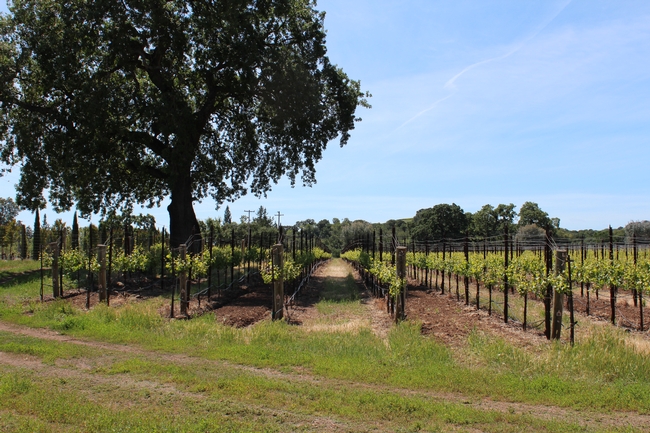
The authors describe the assumptions used to identify current costs for production of the winegrapes, material inputs, cash and non-cash overhead. Ranging analysis tables show profits over a range of prices and yields for each variety. Other tables show the monthly cash costs, the costs and returns per acre, hourly equipment costs, and the whole farm annual equipment, investment and business overhead costs.
The new study is titled “Sample Costs to Produce Winegrapes, Chardonnay and Pinot noir, North Coast Region Russian River Valley, Sonoma County – 2016.”
Free copies of this study and other sample cost of production studies for many commodities are available. To download the cost studies, visit the UC Davis Department of Agricultural and Resource Economics website at http://coststudies.ucdavis.edu.
The cost and returns program is funded by the UC Agricultural Issues Center, which is part of UC Division of Agriculture and Natural Resources, and the UC Davis Department of Agricultural and Resource Economics.
For additional information or an explanation of the calculations used in the studies, contact the Agricultural Issues Center at (530) 752-4651, Donald Stewart at destewart@ucdavis.edu or Rhonda Smith, UC Cooperative Extension advisor in Sonoma County, at (707) 565-2621 or rhsmith@ucanr.edu.

